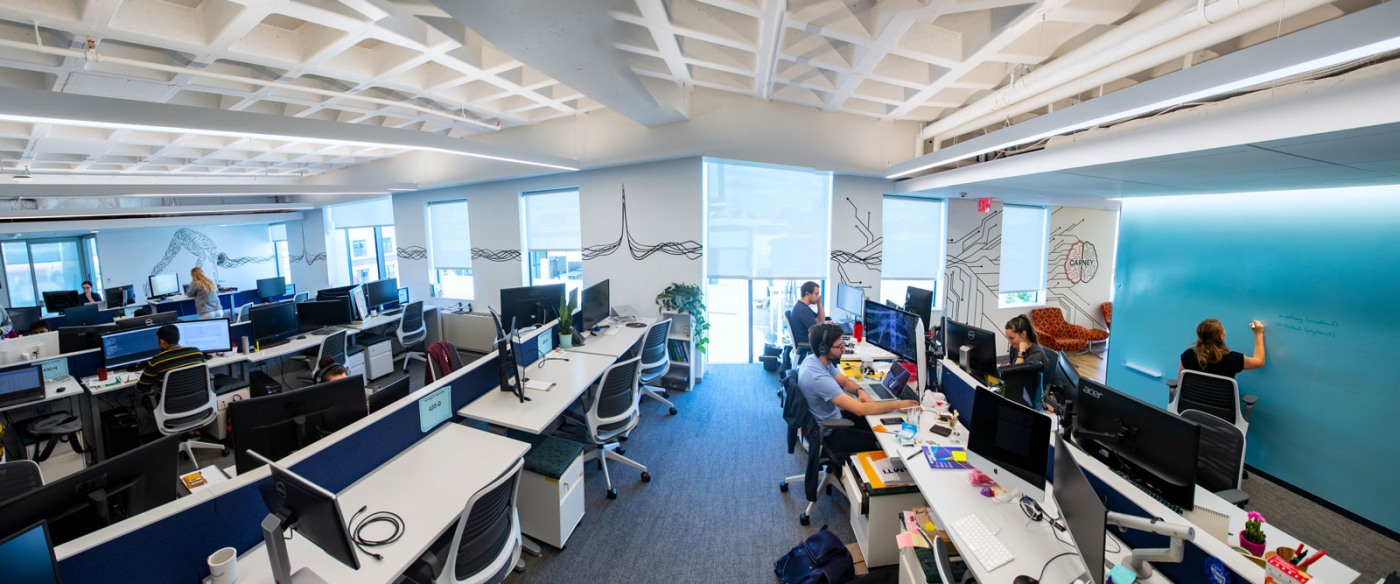“The brain processes information, and you should use the right level of analysis that allows you to characterize that information processing — and how it goes wrong — to better understand what’s going on in affective disorders like anxiety and depression, disorders that involve delusions and hallucinations, and disorders of action and thought like Parkinson’s disease and obsessive compulsive disorder,” Frank said. “Computational brain science is the glue to help understand and connect different levels of analysis. In nature, it’s interdisciplinary.”
Thomas Serre, associate director of the Center for Computational Brain Science, researches the neural computations supporting visual perception. He is trying to determine how the brain solves vision to build machines that can see and interpret the visual world as well as humans do.
Serre’s project builds on 15 years of research developing computational neuroscience models of visual processing in the cortex. The Center for Computational Brain Science will allow Serre to leverage Brown’s expertise in this field while training students and early-career scientists.
“To me, this is all about training the next generation of computational neuroscientists to think across levels of analyses from circuits and networks to systems and computations, and to speak fluently the language of neurobiology, cognitive neuroscience and artificial intelligence,” said Serre, an associate professor of cognitive, linguistic and psychological sciences who also directs Brown’s Center for Computation and Visualization.
Cross-training and commercialization
One signature feature of the Center for Computational Brain Science is its fellows program, designed to enable the advancement of high-risk projects and ideas with the potential for commercialization or broader adoption by the scientific community or by industry. The goal of the program is to bridge the gap from science to application to improve brain health, said Frederike Petzschner, who will join the center this year as the first fellow and will lead the program with Frank.
The program will recruit early-career visionaries for three-year residencies at the Carney Institute. Scientists will include a mix of experts with computational skills — from scholars with expertise in artificial intelligence, machine learning or computational neuroscience, to experts with a focus on specific applications such as detection of neural signatures related to pathology, closed-loop brain stimulation, and impulsivity and suicide-prevention.
“We are recruiting top research scientists from both academia and industry to contribute to meaningful projects at the interface between neuroscience, machine learning and brain disorders,” said Petzschner, a neuroscientist with a background in physics. “The program is unique in that it aims to merge the best of both worlds: A strong academic basis for new discovery with the support and infrastructure typical for industrial settings, including seed funds, professional project management, team support, career development plans, and facilitation and support to build spinoff companies.”
The center will also provide cross-training in computational methods for students, basic scientists and physician-scientists. The center will host a two-week modeling competition workshop in August titled “Computational Cognitive Modeling of Behavioral and Neural Data.” The workshop will include daily lectures and discussions, hands-on coding tutorials and advanced sessions that provide a deeper understanding of complex modeling approaches, pitfalls and concepts.
Frank said the center will also enhance community engagement through hackathons, scientific symposiums and an interactive seminar series featuring world-class computational neuroscientists.
“If I close my eyes and envision what I would like to see when I think of this center, I would like to step into the Innovation Zone and see a group of active students representing different disciplines on campus,” Serre said, referencing the Carney Institute’s shared space for workshops, hackathons, data science challenges and lectures. “I would like to see machine learning and data science students collaborating with the neuroscience and cognitive science students and physicists. That’s my dream: a buzzing Innovation Zone with students collaborating on projects that would be beyond what any one of them in isolation would be able to carry.”
